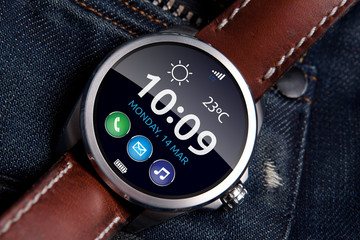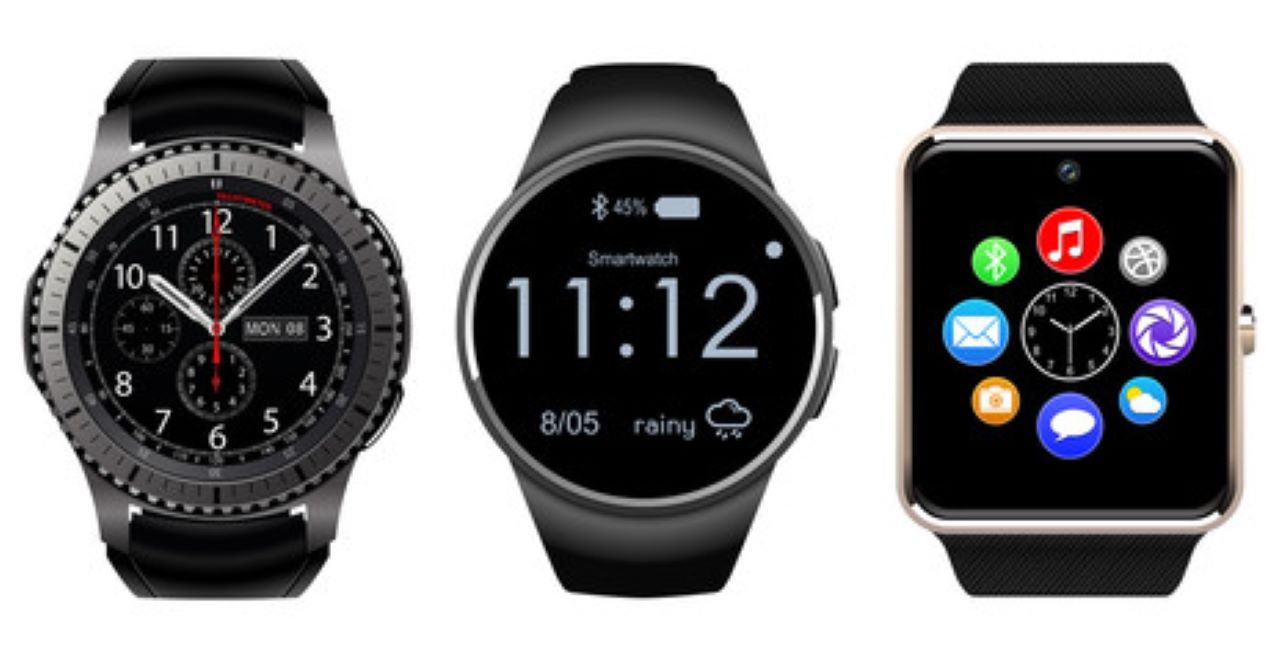Smart watch invented in 1970
The latest craze is to wear a smart watch , whether you are a fitness freak or not . Wearing smart watches have become a status symbol. 230 million ( 3% ) of world’s population wears smart watches which are usually very expensive , sometime cost more than the smart phones. . Apple smart watches have biggest market share with 40 % followed by Samsung with 15 % .

The history of smartwatches dates back further than you might think. While the modern concept of a smartwatch as a wearable computing device with advanced functionalities like health monitoring, app integration, and communication capabilities is relatively recent, the idea of combining timekeeping with technology goes back several decades. Here’s a brief below in history of smartwatches:
- 1970s – 1990s : Early concept of integrating computing functionalities into a wristwatch can be traced back to the 1970s. Pulsar, a division of Seiko, released the “Pulsar Time Computer” in 1975, which is often considered the first digital wristwatch.
- 1984 – 1999 : Seiko RC Series further advanced the smartwatch concept with its RC series. The Seiko RC-1000 was a wristwatch with basic computer features, like a calculator, calendar, and the ability to store memos.
- 2004-2008 : Microsoft SPOT launched the Smart Personal Objects Technology initiative, which aimed to connect everyday objects and could display news, weather, calendar, and messages.
- 2013 : The Pebble smartwatch became a significant milestone in the history of smartwatches. Pebble’s success helped kickstart the modern smartwatch industry.
- 2014-2105 : Android Wear and Apple Watch introduced. Google introduced its Android Wear platform, a version of the Android operating system designed for wearable devices, including smartwatches. This move brought many more manufacturers into the smartwatch market.
- 2015 : Apple launched its first smartwatch in April 2015. Its polished design, app ecosystem, and integration with iPhones made it a commercial success and helped popularize smartwatches among a broader audience. Various models and designs with diverse features, including fitness tracking, heart rate monitoring, GPS, and cellular connectivity, were introduced.
- Present : The smartwatch industry is continually evolving, and new developments are happening with endless features.
Following are the biggest Smart watch makers in the market –
| Brand | Brand | Brand | Brand |
| Samsung | Apple | Xiomi | Garmin |
| Fitbit | Casio | Huewei | LG |
| Fossils | Lenovo | Amaze fit | Asus |

What a smart watch should have ? . The best smartwatch should have a combination of essential features and capabilities that cater to various user needs and preferences. Here below are some key features smartwatch should ideally possess:
- Compatibility: The smartwatch should work seamlessly with both Android and iOS devices, ensuring a broad user base can use it.
- Design and Build Quality: A high-quality build with durable materials, a comfortable strap, and an attractive design that suits various styles and occasions.
- Display: A bright, clear, and responsive display that is easy to read, even in various lighting conditions.
- Performance: Smooth and responsive performance, quick app loading, and minimal lag when navigating through the user interface.
- Battery Life: Decent battery life that can last at least a day with typical usage, or even longer for more advanced models.
- Health and Fitness Tracking: Robust health and fitness features, such as heart rate monitoring, sleep tracking, step counting, GPS tracking, and various workout modes.
- Water Resistance: A high level of water resistance, allowing the watch to be used in the rain, during swimming, or while showering.
- Notification Management: The ability to receive and manage notifications from various apps and services on the paired smartphone.
- App Ecosystem: Access to a wide range of apps that enhance the watch’s functionality, including fitness, productivity, entertainment, and more.
- Voice Assistant Integration: Seamless integration with popular voice assistants like Siri, Google Assistant, or Alexa for voice commands and hands-free control.
- Communication Features: The ability to make and receive calls, respond to messages, and access emails directly from the watch, especially if it has cellular connectivity.
- NFC and Mobile Payments: Support for NFC payments like Google Pay or Apple Pay for convenient and secure transactions.
- Storage: Sufficient internal storage to store music, apps, and other data directly on the watch.
- Customization: Options to customize watch faces, straps, and other aspects to suit individual tastes.
- Updates and Support: Regular software updates and ongoing support from the manufacturer to ensure the watch stays up-to-date and secure.
- Price: An ideal smartwatch should offer a good balance between features and price, providing value for the investment.
It’s important to note that individual preferences and needs may vary, so the “best” smartwatch for one person may not be the same for another. Some users may prioritize fitness tracking, while others might value communication features more and many as a show off. I am of last type but use Amazefit & Samsung .
Have a look in Electronic and Gift section of my site Double-Sale.com for selecting a smart watch.












